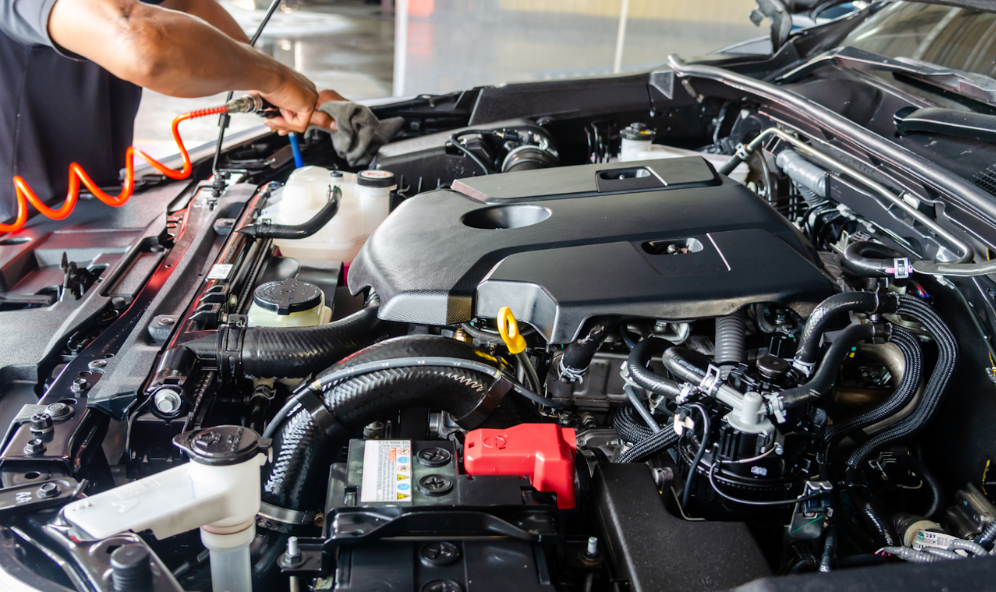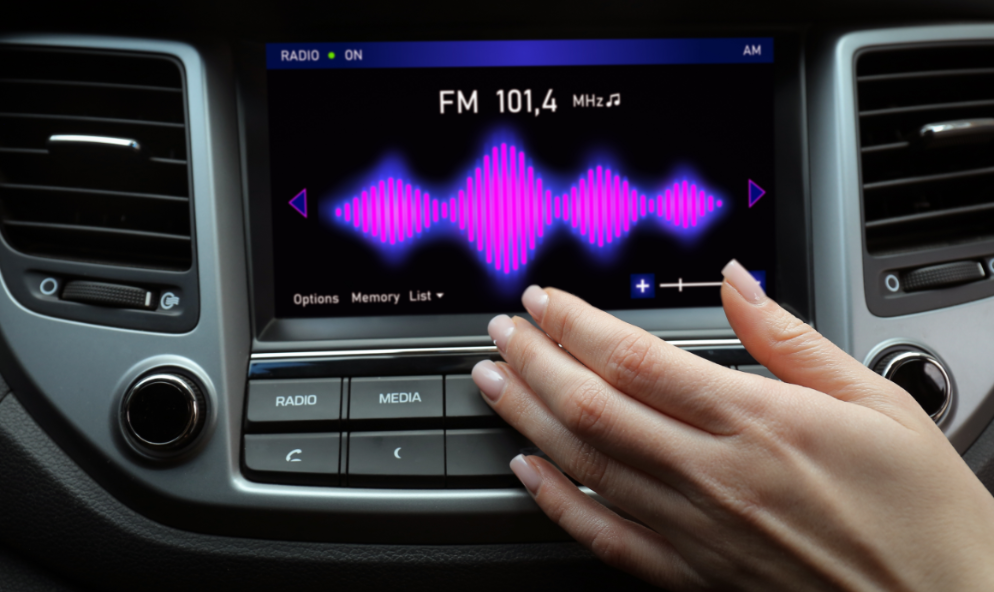The Impact of Stress on Driving
Driving is an essential part of modern life, yet it can often be a source of significant stress. From congested roads to unexpected delays, the challenges of driving can easily impact our mental well-being. Staying stress-free behind the wheel is not just about comfort; it’s about safety and performance. High-stress levels can lead to impaired judgement, slower reaction times, and an increased risk of accidents. According to research, stress affects driving performance by reducing concentration and increasing the likelihood of aggressive driving behaviours
Overview of the 10 Tips to De-Stress Behind the Wheel
In this guide, we’ll explore 10 practical tips to de-stress behind the wheel. These strategies include planning your route ahead of time, maintaining your vehicle, listening to calming music, practising deep breathing exercises, and more. By implementing these tips, you can transform your driving experience into a more relaxed and enjoyable activity. Stay tuned as we dive into each tip in detail, helping you achieve a calmer, safer journey on the road.
Tip 1: Plan Your Route Ahead of Time

Use Navigation Tools
Planning your route ahead of time is essential for a stress-free driving experience. Navigation tools like Google Maps, Apple Maps, and Citymapper offer real-time traffic updates, alternative routes, and estimated travel times. These apps can help you avoid traffic jams, roadworks, and accidents, ensuring a smoother journey Most new cars are also equipped with built-in navigation systems that provide similar functionalities, offering convenience without the need for additional devices.
Using these navigation tools allows you to anticipate potential delays and make informed decisions about your route. For example, Google Maps and Apple Maps can alert you to heavy traffic ahead and suggest faster routes, helping you stay on schedule and avoid unnecessary stress. Citymapper, on the other hand, is particularly useful in urban environments, offering detailed information about public transport options and walking routes, which can be helpful if you need to park and walk to your destination.
Allow Extra Time for Delays
One of the most effective ways to de-stress behind the wheel is to allow extra time for your journey. Planning for potential delays means you’re less likely to feel rushed or anxious if you encounter traffic or roadworks. It’s advisable to leave at least 10-15 minutes earlier than usual, especially during peak traffic hours or if you’re unfamiliar with the route
Allowing extra time also gives you the flexibility to take breaks if needed. On longer journeys, regular breaks can prevent fatigue and help you stay focused. Whether it's stopping for a quick coffee or just stretching your legs, taking a break can make a significant difference in your overall stress levels while driving.
Tip 2: Maintain Your Vehicle

Regular Maintenance Checks
Keeping your vehicle in good condition is crucial for a stress-free driving experience. Regular maintenance checks, such as oil changes, tyre pressure inspections, and brake tests, can prevent unexpected breakdowns and ensure your car runs smoothly. A well-maintained vehicle is less likely to encounter mechanical issues that could cause delays and add to your stress
It's important to schedule routine maintenance with a trusted mechanic and follow the manufacturer’s recommended service intervals. Keeping up with these checks not only enhances your car’s performance but also gives you peace of mind, knowing that your vehicle is reliable and safe.
Keep Your Car Clean and Comfortable
A clean and comfortable car environment can significantly impact your mood and stress levels while driving. Clutter and mess can be distracting and make you feel more stressed. Keeping your car clean, organised, and free of unnecessary items helps create a more pleasant and calming atmosphere
Additionally, personalising your car’s interior to suit your comfort can make a big difference. Adjust your seat to a comfortable position, ensure your mirrors are set correctly, and maintain a comfortable temperature inside the car. Small touches like air fresheners or seat cushions can also contribute to a more enjoyable driving experience, helping you stay calm and focused on the road.
Tip 3: Listen to Calming Music or Audiobooks

Benefits of Soothing Sounds
Listening to calming music or audiobooks while driving can significantly reduce stress and improve concentration. Different types of music can have various effects on your mood and mental state. For instance, slower-tempo music can help relax your mind, reduce anxiety, and create a tranquil atmosphere. On the other hand, upbeat music can keep you alert and focused, which is particularly useful during long drives
Music has a profound impact on the body and mind. It can lower blood pressure, reduce heart rate, and decrease levels of stress hormones. Audiobooks offer a similar benefit by engaging your mind in a story, which can distract you from stressful thoughts and make your journey more enjoyable
Recommended Playlists and Audiobooks
For relaxation, consider listening to genres such as classical, jazz, or ambient music. Specific playlists like "Relaxing Classical" or "Chill Vibes" on Spotify can provide a calming backdrop for your drive. Audiobooks from genres like mystery, fantasy, or self-help can also keep your mind engaged and stress-free. Popular audiobooks such as "The Hobbit" by J.R.R. Tolkien or "Becoming" by Michelle Obama can make your commute more enjoyable and mentally stimulating.
Tip 4: Practise Deep Breathing Exercises
How to Do Deep Breathing Exercises
Practising deep breathing exercises while driving can be an effective way to manage stress. Here’s a step-by-step guide:
Find a Comfortable Position: Ensure you are seated comfortably with your back straight and shoulders relaxed.
Inhale Deeply: Breathe in slowly through your nose, allowing your abdomen to expand fully. Count to four as you inhale.
Hold Your Breath: Hold your breath for a count of four, letting the oxygen saturate your lungs.
Exhale Slowly: Breathe out slowly through your mouth, counting to six. Ensure all the air is expelled from your lungs.
Repeat: Repeat this process five to ten times, or until you feel calmer
Benefits of Deep Breathing
Deep breathing helps to increase the oxygen supply to your brain, which in turn stimulates the parasympathetic nervous system, promoting a state of calm. This technique can help lower blood pressure, reduce heart rate, and alleviate symptoms of stress and anxiety. By incorporating deep breathing exercises into your driving routine, you can maintain focus and stay relaxed, even in challenging situations
Tip 5: Take Regular Breaks on Long Journeys

Importance of Breaks
Regular breaks are crucial for maintaining focus and preventing fatigue during long journeys. Driving for extended periods without rest can lead to decreased concentration, slower reaction times, and an increased risk of accidents. By taking breaks, you can refresh your mind and body, reducing the likelihood of stress and exhaustion
Best Practices for Break Times
To maximise the benefits of your breaks, follow these best practices:
Frequency: Take a break every two hours or every 100 miles, whichever comes first.
Duration: Aim for breaks that last at least 15 minutes. This gives you enough time to rest and recharge.
Activities: Use the break to stretch your limbs, walk around, and get some fresh air. Stretching can help alleviate muscle tension and improve circulation.
Hydration and Snacks: Drink water and have a light snack to keep your energy levels up. Avoid heavy meals that can make you feel sluggish
By planning your breaks effectively, you can maintain a high level of alertness and stay stress-free throughout your journey.
Tip 6: Adjust Your Seating Position
Importance of Comfort and Posture
Proper seating is essential for reducing physical discomfort and stress while driving. An incorrect seating position can lead to back pain, muscle tension, and overall fatigue, which can distract you from focusing on the road. Good posture ensures that you have optimal control over your vehicle and helps prevent strain on your back, neck, and shoulders
How to Adjust Your Seat and Mirrors Properly
Seat Height: Adjust the seat so that your hips are level with your knees. This ensures good circulation and reduces lower back strain.
Seat Distance: Move the seat forward or backwards so that you can easily reach the pedals with a slight bend in your knees. Your feet should rest comfortably on the pedals without stretching.
Seat Back Angle: Adjust the seat back to a slight recline, ideally at a 100-110 degree angle. This position supports your spine and reduces pressure on your lower back.
Lumbar Support: If your seat has lumbar support, adjust it to fit the natural curve of your lower back.
Headrest: Position the headrest so that the middle of it aligns with the top of your ears. This helps protect your neck in case of sudden stops.
Mirrors: Adjust your rearview and side mirrors to minimise blind spots. Ensure that you can see the full view of the road behind you and to the sides without moving your head excessively
Tip 7: Avoid Heavy Meals Before Driving
Effects of Heavy Meals on Concentration
Eating heavy meals before driving can make you feel sluggish and drowsy, affecting your concentration and reaction times. Large, heavy meals can lead to a condition called postprandial somnolence, which is a state of drowsiness following a meal. This is due to the body diverting blood from the brain to the digestive system to process the food, reducing your alertness
Recommended Snacks and Drinks for Drivers
Opt for light, healthy snacks that provide sustained energy without causing drowsiness. Good options include:
Fruit: Apples, bananas, and berries are easy to eat and provide quick energy.
Nuts and Seeds: Almonds, walnuts, and sunflower seeds are great for maintaining energy levels.
Vegetable Sticks: Carrot and celery sticks with hummus can be a refreshing and healthy snack.
Hydrating Drinks: Water, herbal teas, and natural fruit juices help keep you hydrated without adding excess sugar
Tip 8: Stay Hydrated

Importance of Hydration
Staying hydrated is crucial for maintaining focus and a positive mood while driving. Dehydration can lead to headaches, fatigue, and dizziness, which can impair your driving abilities. Proper hydration ensures that your brain and body function optimally, helping you stay alert and attentive on the road
Tips for Staying Hydrated on the Road
Carry a Water Bottle: Keep a reusable water bottle in your car and take sips regularly, especially on long trips.
Avoid Sugary Drinks: Drinks high in sugar can lead to energy crashes. Opt for water, herbal teas, or diluted fruit juices.
Eat Hydrating Foods: Fruits and vegetables with high water content, like cucumbers, watermelon, and oranges, can help maintain hydration levels
Tip 9: Practice Mindfulness and Stay Present
Techniques for Mindfulness While Driving
Mindfulness can significantly reduce stress and improve safety while driving. Here are a few techniques:
Deep Breathing: Practise deep breathing exercises to stay calm and focused.
Body Scan: Periodically check in with your body, noticing areas of tension and consciously relaxing them.
Sensory Awareness: Pay attention to the sights, sounds, and smells around you. This keeps you grounded in the present moment
Benefits of Staying Present
Practising mindfulness helps you stay present and reduces the likelihood of road rage and anxiety. It improves your reaction times and overall driving performance by keeping your mind clear and focused. Mindfulness can turn driving from a stressful chore into a peaceful, meditative experience
Tip 10: Use Technology Wisely
Helpful Driving Apps
Technology can enhance the driving experience when used wisely. Apps like Google Maps, Apple Maps, and Waze provide real-time traffic updates, alternative routes, and alerts for road hazards. Other helpful apps include:
Spotify or Audible: For listening to music or audiobooks.
Fuelio: To track fuel consumption and find the cheapest fuel stations.
Parkopedia: To find parking spaces in busy areas
Avoiding Distractions from Technology
While technology can be beneficial, it’s important to avoid distractions. Here are some tips:
Turn Off Notifications: Use "Do Not Disturb" mode to prevent notifications while driving.
Use Hands-Free Devices: If you need to make calls, use hands-free options like Bluetooth.
Set Up Before You Drive: Configure your navigation and music apps before you start driving to avoid fiddling with your phone on the road
Recap of the 10 Tips
To ensure a stress-free driving experience, it’s important to incorporate practical strategies into your routine. Here’s a quick recap of the 10 tips we’ve covered:
Plan Your Route Ahead of Time: Use navigation tools like Google Maps, Apple Maps, and Citymapper, and allow extra time for delays.
Maintain Your Vehicle: Regular maintenance checks and keeping your car clean and comfortable can prevent unexpected breakdowns and reduce stress.
Listen to Calming Music or Audiobooks: Soothing sounds can improve mood and concentration. Explore calming playlists or engaging audiobooks.
Practise Deep Breathing Exercises: Deep breathing helps to reduce stress and improve focus. Follow a step-by-step guide for effective results.
Take Regular Breaks on Long Journeys: Frequent stops can prevent fatigue and help maintain concentration. Aim for breaks every two hours.
Adjust Your Seating Position: Proper seating reduces physical discomfort. Ensure your seat and mirrors are adjusted correctly.
Avoid Heavy Meals Before Driving: Light meals are better for concentration. Opt for healthy snacks and drinks.
Stay Hydrated: Proper hydration is crucial for focus and mood. Carry a water bottle and avoid sugary drinks.
Practice Mindfulness and Stay Present: Mindfulness exercises can reduce stress and improve safety. Stay aware of your surroundings and stay present.
Use Technology Wisely: Utilise helpful driving apps but avoid distractions. Set up your technology before driving and use hands-free options.
Practise These Tips
Implementing these strategies can transform your driving experience from stressful to serene. By planning ahead, maintaining your vehicle, and incorporating relaxation techniques, you can stay calm and focused behind the wheel. Regular breaks and mindful driving practices can further enhance your safety and enjoyment on the road. Make these tips a part of your routine to experience the benefits of a stress-free journey.
Discover Stress-Free Vehicle Leasing with MW Vehicle Contracts
At MW Vehicle Contracts, we offer low-cost leasing for cars, vans, and pickups in association with Europe's leading financial institutions. Our expertise in sourcing, supplying, and financing vehicles for your business needs is unrivalled. Over the years, business users from all over the country have benefited from our comprehensive service, which puts the customer in control. Whether you need a vehicle for personal use or your business, our knowledgeable staff are here to assist you every step of the way. Visit our website MW Vehicle Contracts to explore our leasing options and find the perfect vehicle for your needs.







